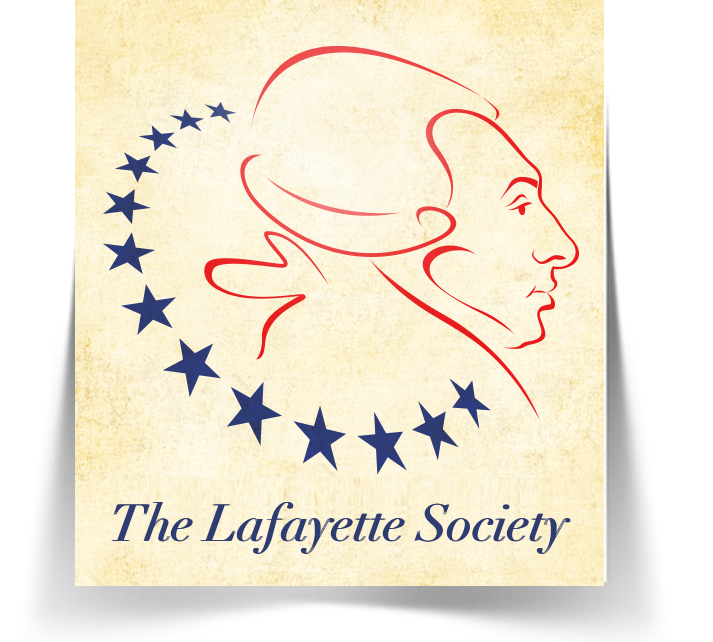By Roy Parker Jr. (local historian and founding editor of the Fayetteville Times newspaper)
As the New Year came in 1825, everybody was getting excited about a birthday party celebrating the “Spirit of 1775” and marking the 50th anniversary of the American War of Independence.
Old political division had largely been put aside in what was known as “the era of Good Feeling.” In the previous year, Congress and President James Monroe, who had been a young officer in the Continental Army, heartily endorsed the plan to invite the aging heroes of the revolution to the party.
And so it was that the Marquis de Lafayette came again to the shores he had first seen in 1777 as a 19-year-old aristocrat of France, determined to fight for the American cause.
For more than a year, Lafayette traveled throughout the United States, first in New England, and then turning south. In the first days of March 1825, the Lafayette entourage entered North Carolina, traveling first to the little Roanoke River town of Halifax, where the state’s Provincial Congress had declared for independence, then to the state capital in Raleigh.
And then to the destination that was already dear to the heart of the visitor, the village of Fayetteville, the first place in the new United States to bear his name.
The entourage of “the General” (he rode in a coach) was accompanied from Raleigh by a mounted troop of Wake County militia. It was nearing five o’clock when he was welcomed to Fayetteville by the town’s three volunteer military companies, the Fayetteville Light infantry, the “Corps of Artillery,” and the Fayetteville Light Horse.
A contemporary account describes the scene:
“The weather was excessively bad; the rain fell in torrents, yet the road for several miles before we reached the place was crowded with men and boys on horseback, and militia on foot; the streets of the town were filled with a throng of ladies, in full dress, hastening across the little streams of water, to approach the General’s carriage, and so much occupied with the pleasure of seeing him that they appeared almost insensible of the deluge which threatened almost to swallow them up.
“This enthusiasm may be more readily imagined, when it is recollected that it was expressed by the inhabitants of a town founded, about forty years ago, to perpetuate the remembrance of the services rendered by him whom they honored on that day.
“Although he stayed in Fayetteville for only about 24 hours, Lafayette was honored by several banquets and receptions, reviewed countless militia and state troops, and had time to inspect the brand new Lafayette Hotel, hurried to completion in time for his visit.
“As he prepared to depart for South Carolina, Lafayette offered a toast to the town:
“Fayetteville. — May it receive all the encouragement’s and attain all the prosperity which are anticipated by the fond and grateful wishes of its affectionate and respectful namesake.”
In his short stay, Lafayette indeed made the most of his hours. In addition to the Lafayette Hotel, where he stayed for two hours at a ball attended by “2 or 300,” he went also to the building of the Masonic Lodge.
He listened to welcoming speeches from the Town House, the predecessor of today’s Market House, which he was said to have recognized from a drawing made by a French artist and which hung in his home in France.
He seems to have spoken with or received the courtesies of scores of townspeople. Especially memorable was his reunion with an old comrade from the War of Independence, Isham Blake, who had been a 25-year-old musician in Lafayette’s headquarters when the 24-year-old general commanded Patriot force in Virginia. The two were together when the British surrendered at Yorktown in 1781.
A later description of their meeting was appropriately vivid: “They embraced and tears dimmed their eyes. When they grew calm, they had much to say to each other and fought anew the battles of Brandy and Yorktown.”
A unique meeting was with a young free black woman, Julie Memerell, who was described as “the only person in town who could converse with him in French.” She would later that year become the wife of saddlemaker Matthew Leary, the town’s leading free black artisan, whose father and grandfather had been soldiers in the War of Independence. They would become the parents of Lewis Sheridan Leary, who would be killed in 1859 as a member of abolitionist John Brown’s failed raiding party at Harper’s Ferry, in what is considered the opening shot of the American Civil War.
Lafayette described a more lighthearted meeting at the ball in his honor, when he “delighted in the presence” of a captivating young visitor from Bertie County, “the Beautiful Miss Capehart of Avoca.”
